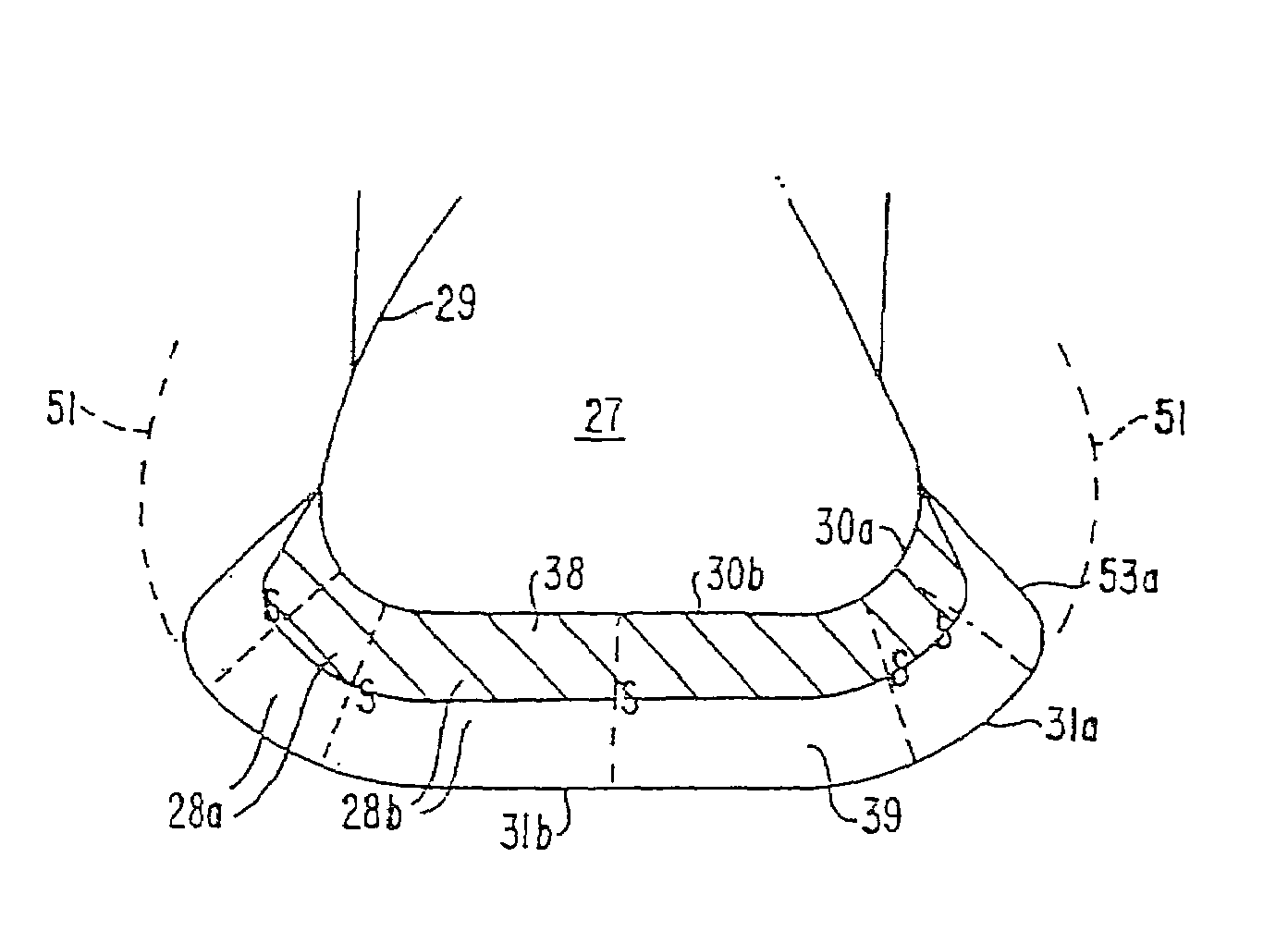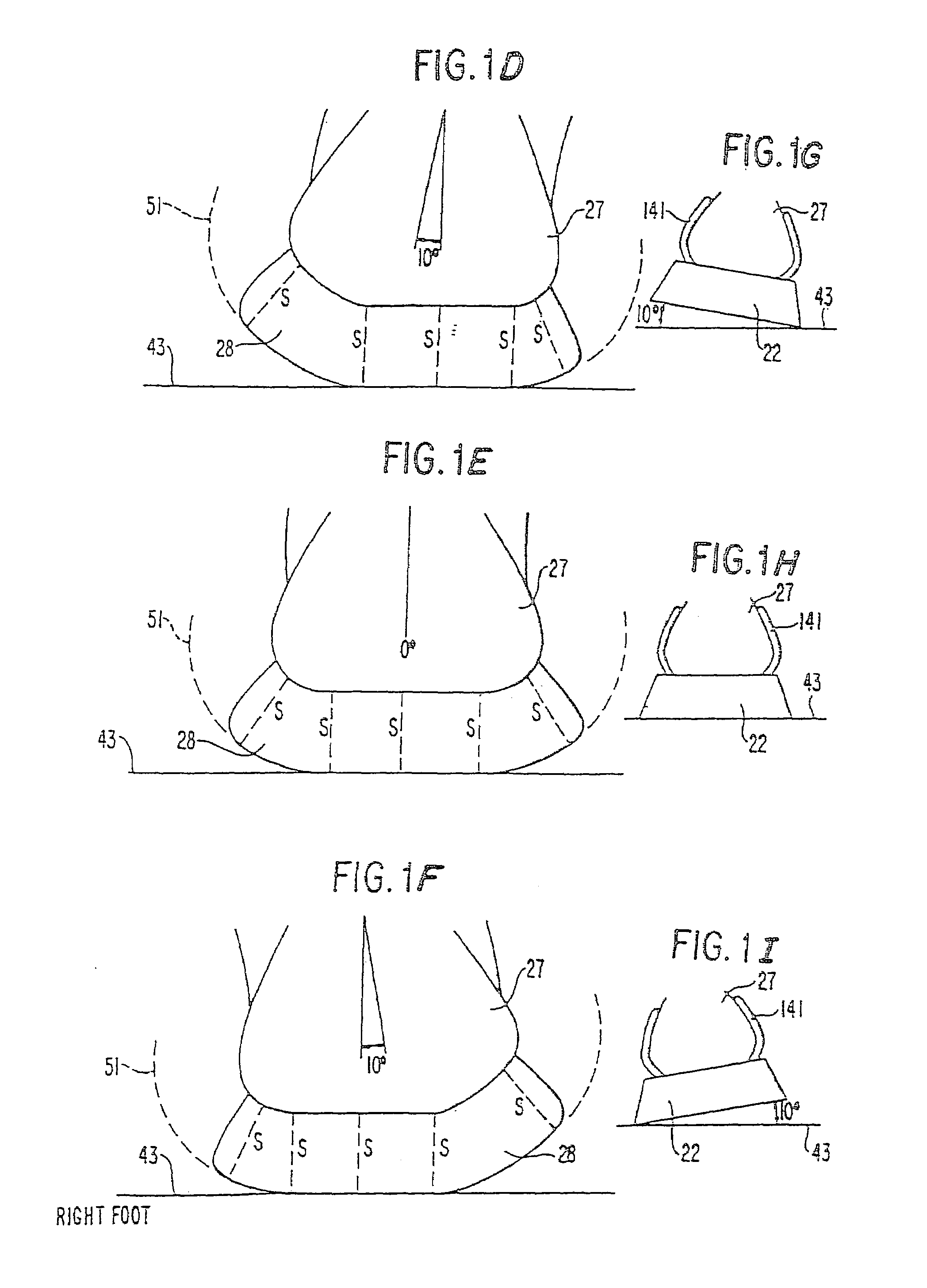Shoes sole structures
a technology of sole structure and shoe sole, which is applied in the direction of footwear, clothing, applications, etc., to achieve the effect of reducing the density of shoe soles and reducing the risk of injury
- Summary
- Abstract
- Description
- Claims
- Application Information
AI Technical Summary
Benefits of technology
Problems solved by technology
Method used
Image
Examples
Embodiment Construction
[0101]FIGS. 1A–C illustrate, in frontal or transverse plane cross sections in the heel area, the applicant's concept of the theoretically ideal stability plane applied to shoe soles.
[0102]FIGS. 1A–1C illustrate clearly the principle of natural deformation as it applies to the applicant's design, even though design diagrams like those preceding (and in his previous applications already referenced) are normally shown in an ideal state, without any functional deformation, obviously to show their exact shape for proper construction. That natural structural shape, with its contour paralleling the foot, enables the shoe sole to deform naturally like the foot. In the applicant's invention, the natural deformation feature creates such an important functional advantage it will be illustrated and discussed here fully. Note in the figures that even when the shoe sole shale is deformed, the constant shoe sole thickness in the frontal plane feature of the invention is maintained.
[0103]FIG. 1A is...
PUM
 Login to View More
Login to View More Abstract
Description
Claims
Application Information
 Login to View More
Login to View More - R&D
- Intellectual Property
- Life Sciences
- Materials
- Tech Scout
- Unparalleled Data Quality
- Higher Quality Content
- 60% Fewer Hallucinations
Browse by: Latest US Patents, China's latest patents, Technical Efficacy Thesaurus, Application Domain, Technology Topic, Popular Technical Reports.
© 2025 PatSnap. All rights reserved.Legal|Privacy policy|Modern Slavery Act Transparency Statement|Sitemap|About US| Contact US: help@patsnap.com



